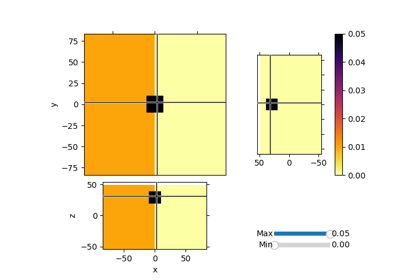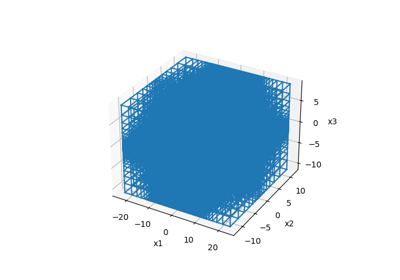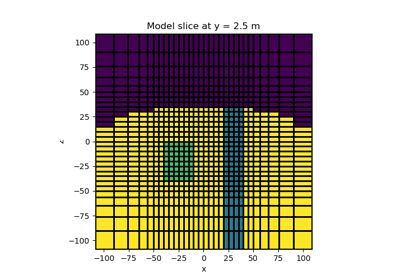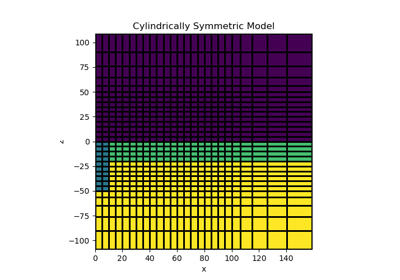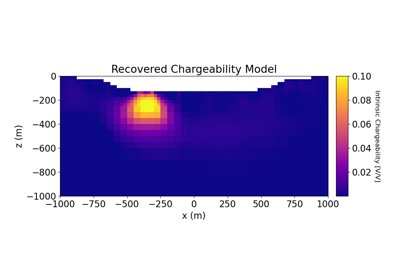simpeg.maps.ComboMap#
- class simpeg.maps.ComboMap(maps, **kwargs)[source]#
Bases:
IdentityMapCombination mapping constructed by joining a set of other mappings.
A
ComboMapis a single mapping object made by joining a set of basic mapping operations by chaining them together, in order. When creating aComboMap, the user provides a list of SimPEG mapping objects they wish to join. The order of the mappings in this list is from last to first; i.e. \([\mathbf{f}_n , ... , \mathbf{f}_2 , \mathbf{f}_1]\).The combination mapping \(\mathbf{u}(\mathbf{m})\) that acts on a set of input model parameters \(\mathbf{m}\) is defined as:
\[\mathbf{u}(\mathbf{m}) = f_n(f_{n-1}(\cdots f_1(f_0(\mathbf{m}))))\]Note that any time that you create your own combination mapping, be sure to test that the derivative is correct.
- Parameters:
- maps
listofsimpeg.maps.IdentityMap A
listof SimPEG mapping objects. The ordering of the mapping objects in thelistis from last applied to first applied!
- maps
Attributes
Determine whether or not this mapping is a linear operation.
The mesh used for the mapping
Number of parameters the mapping acts on.
Dimensions of the mapping.
Methods
deriv(m[, v])Derivative of the mapping with respect to the input parameters.
dot(map1)Multiply two mappings to create a
simpeg.maps.ComboMap.inverse(D)The transform inverse is not implemented.
test([m, num, random_seed])Derivative test for the mapping.
Examples
Here we create a combination mapping that 1) projects a single scalar to a vector space of length 5, then takes the natural exponent.
>>> import numpy as np >>> from simpeg.maps import ExpMap, Projection, ComboMap
>>> nP1 = 1 >>> nP2 = 5 >>> ind = np.zeros(nP1, dtype=int)
>>> projection_map = Projection(nP1, ind) >>> projection_map.shape (5, 1)
>>> exp_map = ExpMap(nP=5) >>> exp_map.shape (5, 5)
Recall that the order of the mapping objects is from last applied to first applied.
>>> map_list = [exp_map, projection_map] >>> combo_map = ComboMap(map_list) >>> combo_map.shape (5, 1)
>>> m = np.array([2.]) >>> combo_map * m array([7.3890561, 7.3890561, 7.3890561, 7.3890561, 7.3890561])
Galleries and Tutorials using simpeg.maps.ComboMap#
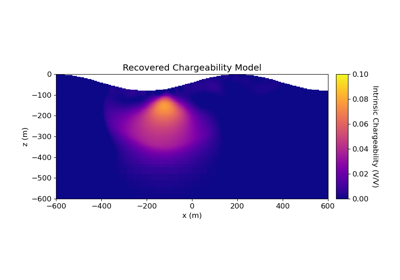
2.5D DC Resistivity and IP Least-Squares Inversion

Joint PGI of Gravity + Magnetic on an Octree mesh using full petrophysical information
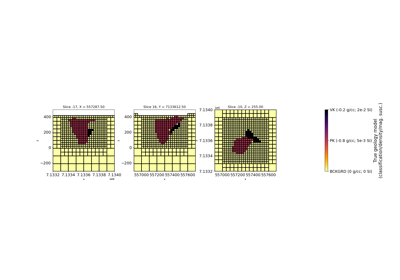
Joint PGI of Gravity + Magnetic on an Octree mesh without petrophysical information

